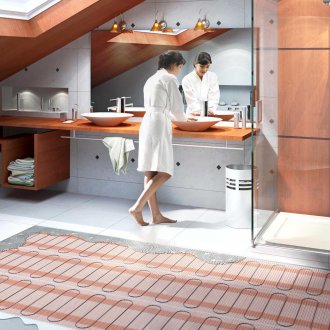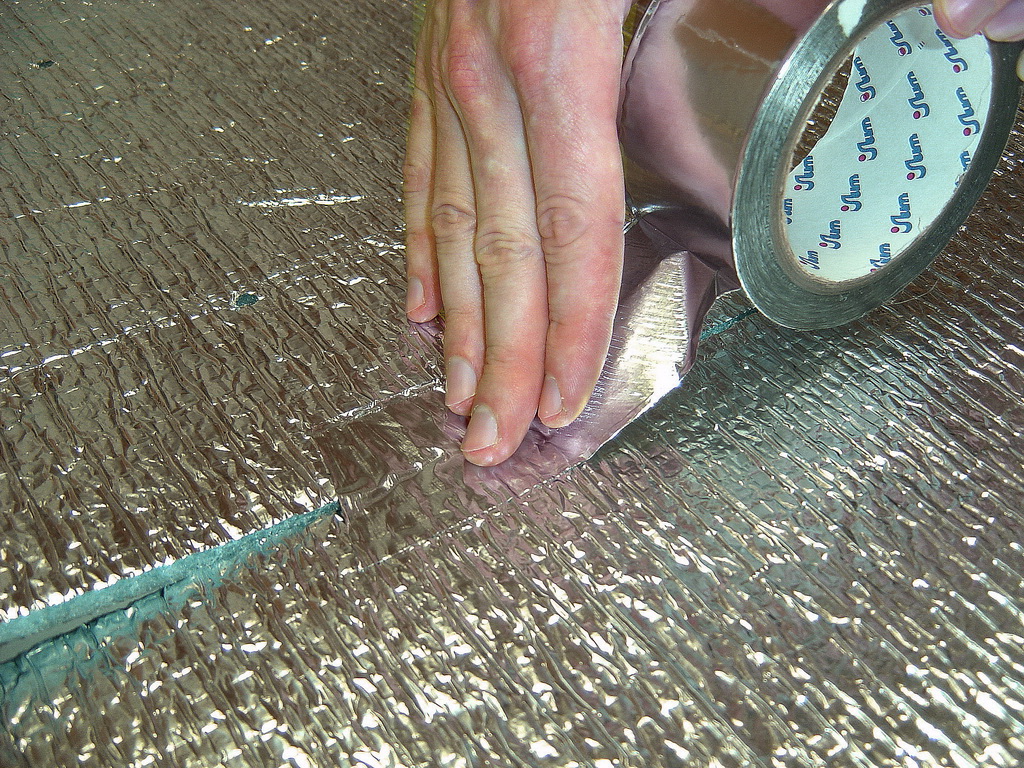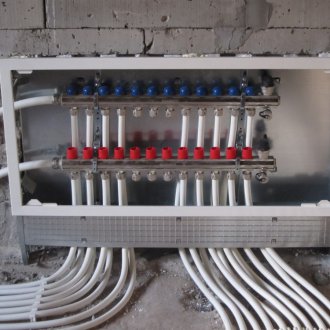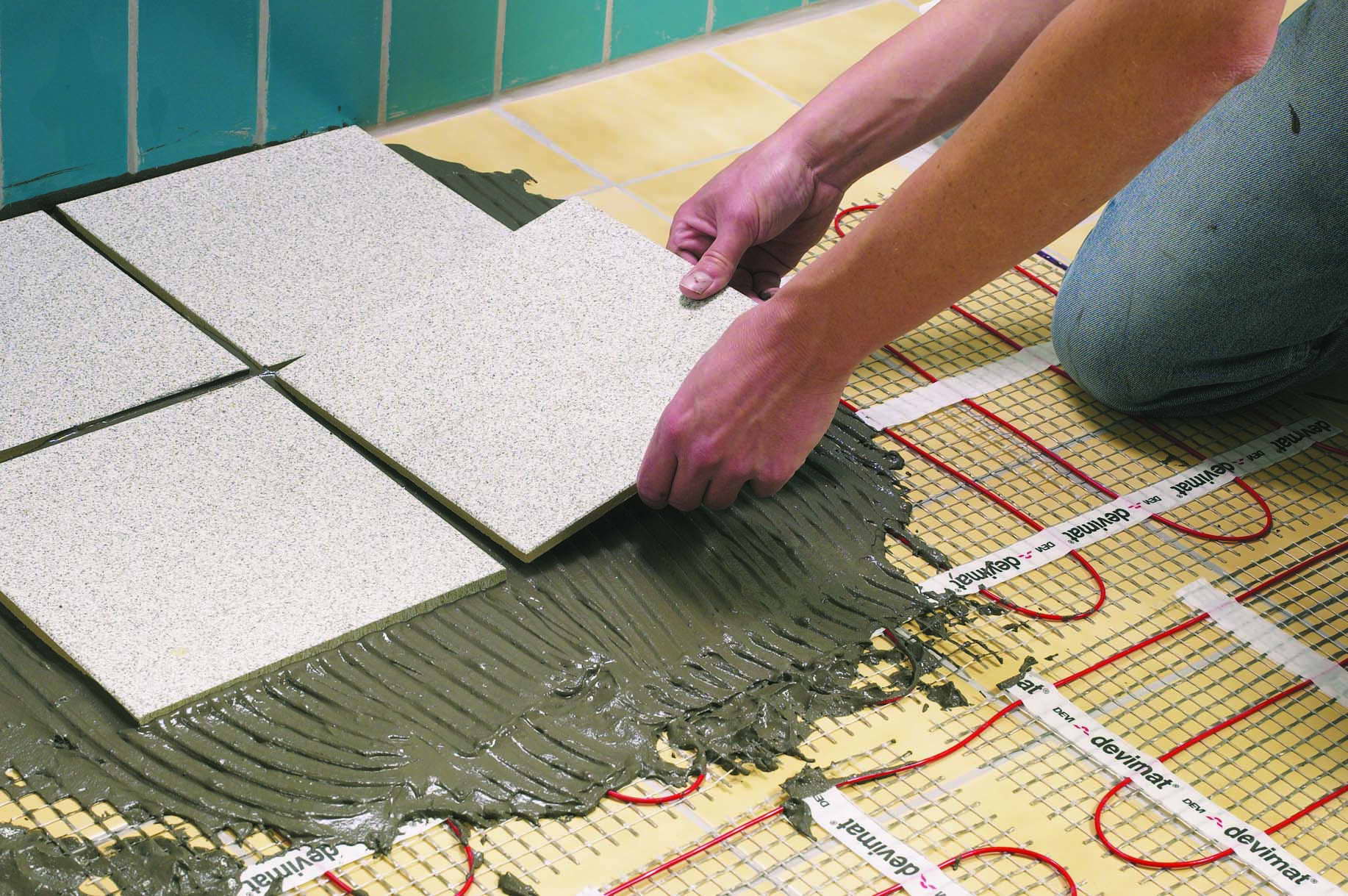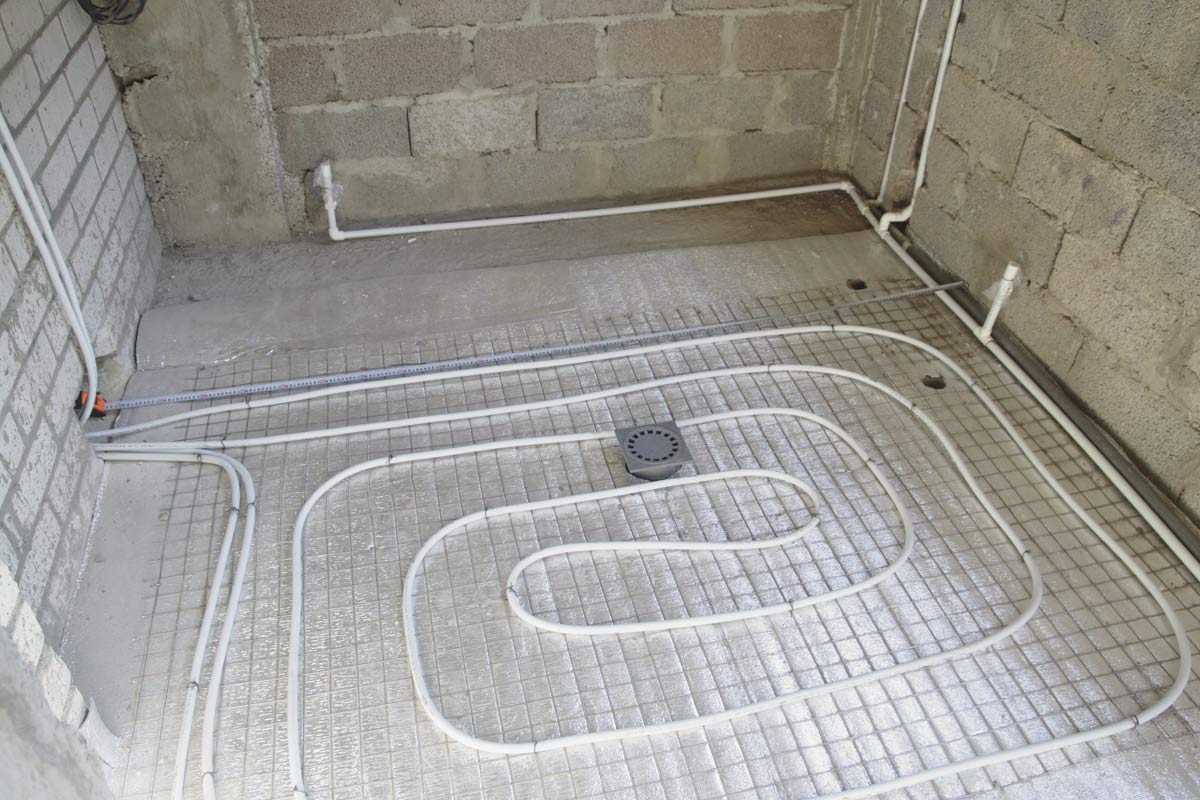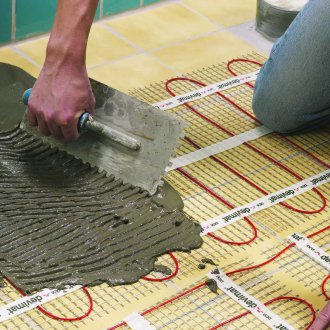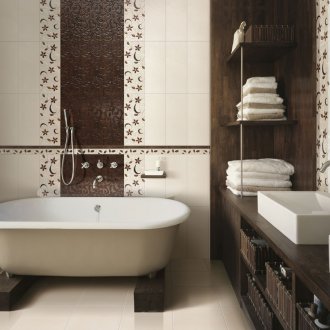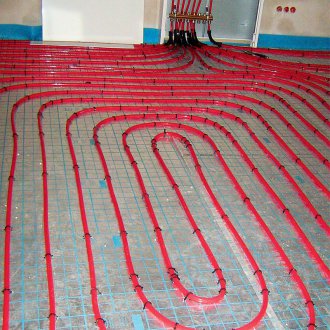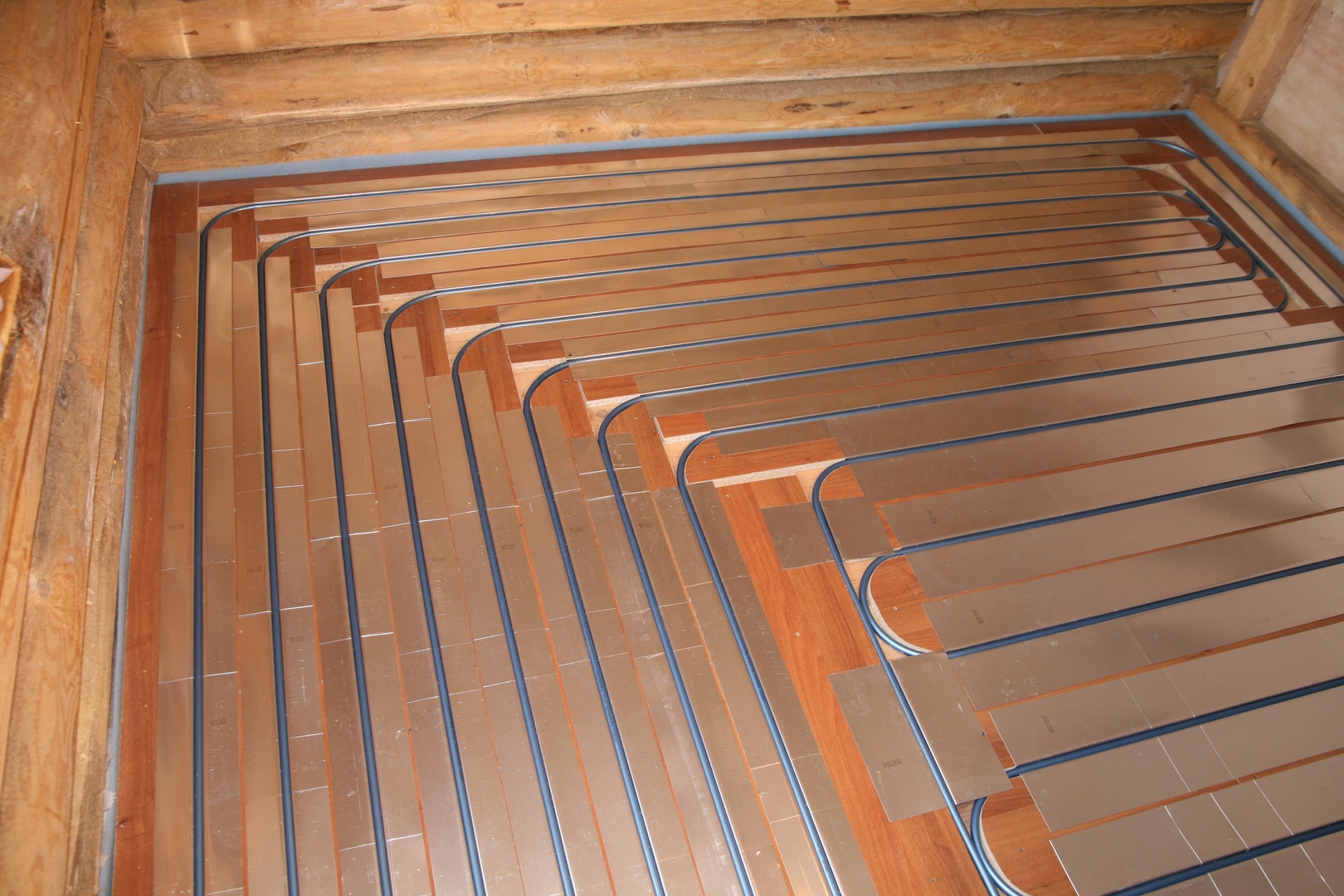Warm floor in the bathroom: design features (20 photos)
Content
In the bathroom, one has to step on the floor after taking procedures with bare feet. The tile is cold at any time of the year, as it poorly accumulates heat in itself without directional heating. The discomfort from tactile contact with the tiles is so great that the question of whether a warm floor in the bathroom is needed seems to everyone to be rhetorical. It will solve several problems at once: it will increase the comfort level, maintain the desired temperature outside the heating season, and dry up water drops on ceramic tiles. Putting a warm floor is beneficial, its cost is affordable for everyone, installation takes a minimum of time, and the feeling of unique coziness accompanies every time you visit the bathroom.
Types of underfloor heating for a bathroom
The benefits of underfloor heating in a bathroom are obvious, as is the fact that it can be heated with hot water. Craftsmen made original systems, feeding them from a heated towel rail, batteries. These were the first developments that were further developed with the advent of ceramic-metal pipes, which could be bent and laid over the entire area of the bathroom.
Technology does not stand still and today the underfloor heating floor can be laid using special equipment. The most common are the following types of underfloor heating:
- water;
- electric;
- infrared.
Each option has its pros and cons, which one to choose can be decided only by considering in detail each of the proposed options.
Features of water floor heating
Creating a water heated floor in the bathroom seems to be a simple and logical solution. Today, there is everything necessary for this: pipes that can be bent in a given direction, fittings for connecting to a hot water supply system. The point is small: choose what will be the source of coolant. In the apartment it can be a hot water system or central heating. It is not difficult to feed the floor from the heated towel rail, but everyone is familiar with the situation with the regular shutdown of hot water for maintenance work on urban boiler rooms and pipelines. In this case, you will not have to use underfloor heating in the bathroom all year round. It is not profitable to power the system from hot water from the boiler; it is better to immediately install an electric floor, this will be a more economical solution.
There is one more minus of the organization of the heated floor in the bathroom from heating - the inability to regulate the temperature of the coolant. Pipes laid close to the tiles will greatly heat the floor on cold winter days when the water temperature in the heating system increases. These shortcomings can be eliminated by having an autonomous heating system. For this reason, the installation of a warm floor in the bathroom from hot water is relevant in a private house. It can be powered not from a heated towel rail, but from a dedicated coolant supply channel. The water temperature can be adjusted in the same way as with a heating system.
Among the advantages of a water heated floor for tiles:
- minimum costs for maintaining the temperature of the coolant;
- affordable cost of components and pipes;
- high efficiency in large areas;
- environmental friendliness.
The disadvantage of the system is the possibility of leaks, getting rid of the consequences of which is difficult and expensive. It is necessary to install reliable waterproofing in the bathroom, an automated leakage protection system. This increases costs, complicates installation. Another disadvantage of the water floor is the significant diameter of the pipes, even if you purchase cermet with an internal diameter of 15 mm, then a laid underfloor heating under the tile will reduce the height of the room by 2-3 cm.
Features of laying electric floor heating
If you want to install the floor in the bathroom with your own hands, owners of apartments and houses are increasingly choosing an electric heated floor. The reason for the popularity of this system is its simple installation, the ability to control the temperature with a thermostat. For work, you must purchase the following equipment and accessories:
- heating cable;
- temperature regulator;
- thermal sensor;
- corrugated pipe;
- foil insulation;
- mounting tape.
Two types of electric underfloor heating are produced - cable and in the form of thermomats. Before installing any of these types of floors, put foil insulation. It will reflect heat up, which will significantly reduce the cost of electricity to maintain a given temperature.
Cable electric underfloor heating in the bathroom is installed in a concrete screed, thermostats are laid in the adhesive layer during the installation of tile. This allows you to minimize the effect of the system on the height of the ceilings, which distinguishes it from a water heated floor.
One of the main issues that concern property owners is the level of safety of the underfloor heating. Manufacturers spend significant amounts of money on providing good protection against electric shock. Double braid made of high quality polymer materials provides a high level of security. When choosing a floor, it is necessary to give preference to a shielded cable that will create a minimum of magnetic interference.
Advantages of a warm electric floor:
- simple and quick installation;
- comfortable temperature;
- simple thermostat control;
- affordable price.
The minus of the system is an increase in the cost of paying for electricity, which is especially sensitive for owners of private houses. In urban apartments, the area of technical rooms is minimal, so you can lay a warm floor in the toilet and in the bathroom.
Infrared underfloor heating
Self-installation of a warm floor in the bathroom will become easier if you opt for film infrared systems. They appeared not so long ago, but today they are increasingly chosen by the owners of city apartments and cottages. A feature of infrared floors is the generation of heat as a result of the passage of electric current through special elements. Infrared rays quickly and gently heat ceramics, while consuming a minimum amount of electricity
The infrared laid floor in the bathroom does not affect the height of the room. It is mounted in a concrete screed, the film has a small thickness and due to this the screed height remains almost unchanged.
The advantage of a film underfloor heating is not only easy installation. Infrared radiation does not affect the finish coating in any way, thanks to this the system can be used when installing a warm floor made of wood, laminate, linoleum, and parquet. If the bathroom has a wooden floor, for example, made of yew, then there is no better option for a heating system.
Among the main advantages of the infrared floor are:
- the possibility of partial heating of the surface;
- safe use in a wooden house;
- do not dry indoor air;
- affordable cost of a set of necessary equipment;
- high inertia of heating;
- high efficiency of the equipment ensures minimal energy costs;
- the ability to quickly dismantle and install equipment in a new place.
Despite the large number of advantages, the infrared system has its own disadvantages. The main ones are:
- dependence on electric current;
- a ban on the installation of furniture over infrared floor elements;
- the need for insulation of the wiring going to the film.
IR systems will make the floor warm, the air in the room will remain comfortable, as its humidity will not fall below the prescribed value.
Which floor to choose for the bathroom?
Which warm floor is better and more efficient? This question interests everyone who is thinking about how to make a warm floor in a bathroom practical and inexpensive. For owners of private houses, it is not difficult to choose a warm floor - even infrared systems cannot compete in costs with a water floor. Especially the difference in cost is visible when using gas heating boilers. The ceiling height in a private house is also not critical, and the durability of cermet pipes will forget about operating costs for 50 years.
We decided to please ourselves and surprise the guests with a wooden floor in the bathroom, do not know how to put heating? Install the infrared film floor. Are you planning to install furniture and a washing machine in the bathroom, while there will be a minimum of space in the room? It is better to use electric thermomats or a cable for heating a warm floor. If the main question for you is how much is a warm floor, then it is better to give preference to IR films. They can only be placed under the area in the bathroom that will not be covered with furniture. It is only necessary to make accurate calculations and be prepared for the fact that outside the heating season the bathroom will be cool.
What is the best underfloor heating and how to put an IR film you can figure it out yourself. For the installation of electric and water floors should invite specialists. Their experience will help get rid of most of the disadvantages of these systems, prevent possible malfunctions and malfunctions. The operation of underfloor heating laid by professionals will deliver maximum comfort.
